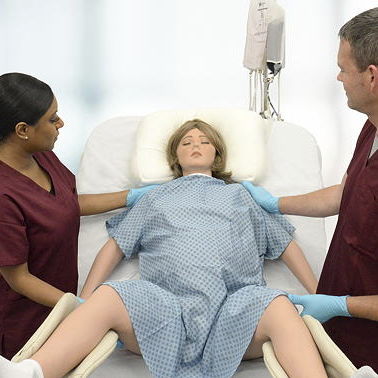
#Industry News
Can Obstetric Simulation Technology Help Reduce Maternal Morbidity?
The US Centers for Disease Control and Prevention describes maternal morbidity as the “unexpected outcomes of labor and delivery that result in significant short- or long-term consequences to a woman’s health.”
Despite advances in medicine, the country still sees about 650 to 750 maternal deaths annually. However, The Commonwealth Fund states that the overall rate of maternal morbidity numbers at 50,000 to 60,000 women each year.
With such alarming statistics, it’s clear that medical courses must adopt the best possible training methods and give doctors and nurses the skills necessary to address this issue.
Maryville University outlines what is needed for healthcare risk management development, including establishing the context of possible risks, evaluating said risks, and establishing workflows for how to treat and manage them. Further, professionals must understand the underlying causes, scope, and potential severity of any to successfully treat and manage risks.
When it comes to reducing maternal morbidity, such risk management is crucial—and one of the most comprehensive tools for this is obstetric simulation. Here’s what you need to know.
What is obstetric simulation?
Obstetric simulation is a tool for labor and delivery teams to train for emergency situations safely, without any danger to patients. Simulation software for medical education was first invented in the 1980s and has since expanded to include more advanced birthing scenarios. A study by Central Michigan University explains that simulation training enacts high-risk obstetric situations recreated in a life-like environment. This allows OBGYN residents and students to train in technical and non-technical skills to prepare for real-life cases more effectively.
What does obstetric simulation teach us?
Today, there are many different types of obstetric simulators available for training. The functions they offer range from basic birthing trainers to more advanced hybrid simulators. Basic birthing trainers simulate regular deliveries and standard procedures, like hemorrhage control, cesarean, hysterectomy, or episiotomy repair. On the other hand, hybrid simulators involve a patient actor and a task trainer within the same session. These are designed to help improve non-technical skills like communication or team training. Clinical simulation can offer learning skills for diverse cases like standard delivery, instrument deliveries, fetal malpresentation, or massive blood transfusion protocol. They also teach operative skills for salpingectomy, oophorectomy, and access to the abdomen.
RealMom 2.0 simulator with doctors.
What are the benefits of obstetric simulation?
Although more advanced simulators can be expensive, the cost of maintenance and consumables are minimal. Simulators also last for years and can train many students to heighten preparedness for emergency scenarios.
This allows students, residents, and nurses to become more familiar with cases that they may have limited encounters with in real life. By simulating these scenarios, facilities can significantly enhance preparedness for when these situations arise. This way, professionals complement technical knowledge with hands-on experience.
Simulations also prepare them not only as individuals but, more importantly, as members of a care team. Given how critical team coordination is to improving patient outcomes, simulating the difficulties that may arise can prepare entire care teams adequately. This significantly improves competency and reduces their margin for error.
How can obstetric simulation be used to improve maternal morbidity more effectively?
Maximize current learning opportunities
The US carries the highest maternal morbidity and mortality rate among industrialized countries. The Century Foundation reports that maternal deaths increased in 2020 — with a notably higher risk for marginalized groups — causing greater demand for innovative solutions. Due to this demand, universities today are enhancing learning experiences starting at the undergraduate level. Research published in the Journal of Nursing Research says that many OBGYN nursing courses have now turned to scenario-based simulation to enhance students’ preparedness for clinical practices. These simulation practices have been pivotal in enhancing stress levels and self-confidence among nursing students. Innovative teaching tools like these are in line with modern nursing degrees that now focus more on technological developments such as nursing informatics. Ultimately, more sophisticated obstetric simulation helps nurses more effectively aid OBGYNs during childbirth, especially when assisting mothers outside the hospital setting.
More life-like simulations to improve real-world outcomes
OBGYN students and teachers practicing on Operative Experience labor and delivery simulators
Medical professionals can benefit from more comprehensive training with technology as simulations become more advanced. Operative Experience Emergency OB simulators offer a complete and integrated training solution for labor and delivery continuum of care.
They are fully operable and feature accurate and tactile anatomy with realistic blood and fluids. These provide learners with real-world operative experience that trains even their emotional response to high-adrenaline scenarios. Although simulations are far from standardized in medical education, the widespread implementation of tools like these can expand the competency of medical professionals.
Given how critical it is to improve the state of maternal health in the US, medical institutions and facilities must always be looking for more innovative solutions for skills development. Ongoing advancements in simulation technology can equip professionals with the necessary training to improve patient outcomes.





